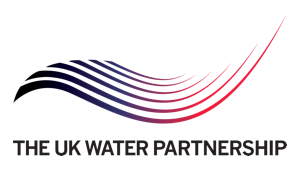The challenge
The UK is a densely populated small island. Its small rivers allow limited dilution of any chemical that enters them. Because of this, aquatic life here faces more risk of exposure to pharmaceuticals than in most developed nations. Sewage treatment plants (STPs) often cannot completely eliminate these compounds entirely and as a result, trace levels are discharged into surface waters.
The demand for chemotherapy treatment continues to increase by approximately ten per cent a year. Given the large number of cytotoxic drugs used in chemotherapy, it is important to know more about which ones make it into our river systems and in which concentrations.
The solution
A modelling exercise was performed to assess the additive effluent concentrations of major cytotoxic drugs used in England. Predictions were made using the LF2000-WQX. Low Flows 2000 was developed by the Centre for Ecology and Hydrology and Wallingford Hydro-Solutions Limited and is used for estimating flows at ungauged sites. It has been widely used by the Environment Agency of England and Wales and by the Scottish Environment Protection Agency. The LF2000-WQX can predict statistical distributions of concentrations of down-the-drain chemicals in river stretches downstream of all major STPs in England and Wales. This risk assessment has attempted to calculate plausible upper boundary concentrations for the different selected cytotoxic drug families in raw intake water taken from the River Thames.
In parts of the UK, river water downstream of STP’s is treated, extracted and becomes drinking water. There is a high probability that treatments such as ozonation, activated charcoal and chlorination would remove many cytotoxics, but no definitive data exists to confirm this yet. Previous research has shown these purification techniques don't always remove 100 per cent of pharmaceutical contaminants, particularly when the source water contains many other natural organic molecules.
The risk to healthy adults from this exposure is low. However, special subgroup populations such as newborn babies may be at an elevated risk due to their developmental vulnerability.
Resulting benefits
At present, the European Drinking Water Directive (98/83/EC) does not contain water quality goal or thresholds for cytotoxins and it is not clear how the different regulatory authorities would assess the risk of inadvertent exposure to combinations of cytotoxic drugs. This study has identified a number of issues why inadvertent exposure to cytotoxic drugs through drinking water in the Thames area requires further research. The research will provide evidence to why it is important to consider adopting water quality goal or thresholds for cytotoxins and improve STP processes and technology to remove cytotoxins.
Future directions
With Cancer rates predicted to increase, the prevalence and increasing use of cytotoxic drugs are likely to correlate. The ability of a proportion of cytotoxic drugs to pass through sewage treatment unchanged, the limited dilution in the Thames and the abstraction of this water for drinking purposes even during low flows it is important for further research to be carried out.
Further research on the cytotokins removal in drinking water purification is required also.
None listed.
Customer:

Sources of funding
NERC National Capacity funding : xxxx
Defra project xxxxx
NERC KE Project Grant
 Andrew Johnson
Andrew Johnson
Centre for Ecology and Hydrology
t: +44 (0) 1491 838800
UK Water Research Directory entry



















 The Water Security Knowledge Exchange Portal supports the objectives of the
The Water Security Knowledge Exchange Portal supports the objectives of the 